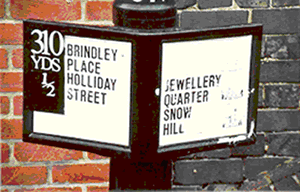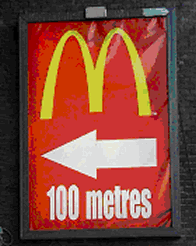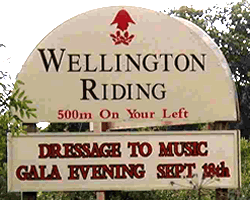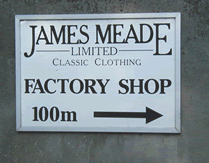Contrary to the misinformation spread by opponents of completing the conversion to the metric system, there is nothing “illegal” about using metric units on direction and distance signage. All that is needed is consent under the Town and Country Planning (Control of Advertisement) Regulations – and this is easily obtained.
A summary of the position is given below but see here for a more detailed explanation.
UKMA believes the legal position to be as follows
All signs are defined as “advertisements” for the purposes of the Town and Country Planning Acts. Most advertisements require consent under the T&CP (Control of Advertisement) Regulations. However, the Regulations provide that signs which conform to the Traffic Signs Regulations and General Directions (TSRGD) do not require a separate consent. The TSRGD does not authorise metric signage (with the exception of height and width restriction and warning signs, provided that they are accompanied by an imperial sign).
However, it is open to anybody (including local authorities and private individuals) to apply for consent under the T&CP (Control of Advertisement) Regulations to erect a sign. Consent can only be refused on grounds of “amenity” or “public safety”, and the content of the sign may not be controlled by the Planning Authority. Thus, the authority may object to the position, size or level of illumination of the sign, but they cannot refuse consent because of what it says or the measurement units which appear on it – although of course there may be other rules regarding defamation, misleading information, decency, etc.
The conclusion from this is that if an individual or an authority obtains “express” consent for an advertisement beside a road or footpath, they can use metric – or indeed any other – units.
“Imperial vigilantes”
Unfortunately, many local authorities appear to be unaware of the true position and have given in to intimidation from extremist, politically-motivated groups who threaten to vandalise signs. One of these individuals, who had removed a number of contractor’s signs, was described by a judge as an “imperial vigilante” (click here for BBC report). Although his conviction for theft was later quashed, his conviction for criminal damage was upheld.
In other cases, signs that are wrongly claimed to be unlawful are defaced, as in the example below.

This was a perfectly legal and well-designed canal-side sign in central Birmingham (signage on inland waterways is actually required to be metric). Yet mindless vandals have ruined it by obliterating or plating over distances in metres.
The real culprits
However, the real culprits in these childish antics are to be found in the Department for Transport. Although the UK had a long-standing legal obligation to name a date for converting road signage to metric, the DfT did nothing to prepare for this change. Instead, it offered unconvincing excuses for inaction and is now doing all it can to obstruct it.
The longer it delays the more it will cost eventually
UKMA calls on the DfT to:
- name an early date for converting signage
- publish a robust changeover plan
- amend the TSRGD immediately to authorise metres and kilometres on footpath and pedestrian signage and brown tourist signs
- prohibit the future use of the symbol “m” to denote “miles”
- undertake an intensive campaign of driver education shortly before conversion of speed limits
See also UKMA’s more detailed policy statement.
Legally erected metric signs
Private bodies and local authorities regularly erect metric signs legally by obtaining consent under the T&CP (Control of Advertisement) Regulations.
 |
 |
 |
|
These examples of metric signage have been erected perfectly legally by various companies to advertise the direction and distance to their premises. Many other examples abound.
UKMA urges anyone wishing to erect metric signs to ensure that they obtain the appropriate planning consent.
